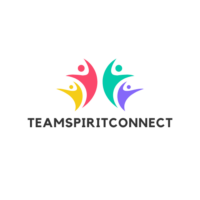Imagine a world where time is as flexible as a rubber band—welcome to the quirky realm of timestadles! These fascinating constructs blend the essence of timelines and schedules, creating a unique way to visualize events and manage time. Whether you’re juggling deadlines or planning the perfect party, timestadles can transform your chaotic calendar into a masterpiece of organization
Timestadles
Timestadles represent a fusion of timelines and schedules, serving as effective tools for visualizing events and optimizing time management. These innovative solutions organize chaotic calendars and assist users in planning diverse tasks.
Definition and Purpose
Timestadles serve as visual aids that integrate time-based data into structured formats. They facilitate effective event planning by showcasing key dates alongside relevant tasks or milestones. Individuals often use these tools to prioritize deadlines, manage appointments, and enhance overall productivity. By presenting information in a clear, concise manner, timestadles help users understand relationships among various events, enabling better decision-making and time allocation.
Historical Context
The concept of integrating timelines with scheduling dates has evolved significantly over time. Early forms of timelines appeared in the 18th century as visual representations of historical events. With the advent of technology, digital timelines emerged in the late 20th century. The introduction of sophisticated software applications in the 21st century paved the way for more versatile time management tools. Today, timestadles continue to develop, addressing the demands of modern life and enhancing user experiences in planning and organization.
Types of Timestadles

Timestadles come in various forms, each catering to different needs for time management and event visualization. Two primary types are digital and physical timestadles.
Digital Timestadles
Digital timestadles use software applications to display timelines and schedules interactively. Users can easily manipulate data, customize layouts, and integrate tools like reminders and alerts. Platforms such as Google Calendar or Asana exemplify digital timestadles, allowing users to collaborate and share updates in real time. Data synchronization across devices enhances accessibility, making information readily available anywhere. Additionally, visual elements like color coding help in prioritizing tasks and deadlines effectively. Users gain insights into their schedules, which can improve overall productivity and time management skills.
Physical Timestadles
Physical timestadles offer tangible solutions for managing timelines and schedules. Typically found in planners or wall calendars, these tools provide a visual representation of events and tasks. Users can write down important dates, making interactions tactile and straightforward. Whiteboards also serve as physical timestadles, allowing for quick edits and the addition of notes. The act of writing helps reinforce memory and organization, as users can physically see their commitments. Additionally, these formats invite collaboration in shared spaces, fostering discussions about schedules and priorities.
Benefits of Using Timestadles
Timestadles offer several advantages in time management and productivity enhancement. These tools streamline organization and improve the ability to visualize timelines and schedules.
Improved Time Management
Timestadles simplify the planning process by clearly displaying deadlines and milestones. Users can prioritize tasks effectively due to the visual representation of overlapping events. Clarity in timelines aids in allocating time resources for various commitments. By combining relevant tasks with key dates, timestadles help individuals avoid scheduling conflicts. This integration of time-based data promotes a proactive approach to events and obligations.
Enhanced Productivity
Productivity increases as timestadles offer better organization of tasks and deadlines. Users experience less stress when they can observe all their responsibilities in one comprehensive format. Efficiency improves through the ability to customize layouts that suit individual preferences. Collaboration enhances when sharing visual schedules with teams or family members. Such clarity fosters open dialogue about upcoming projects and responsibilities, ensuring everyone remains aligned on objectives.
Challenges in Implementing Timestadles
Implementing timestadles presents various challenges that organizations must navigate. These hurdles can hinder their effectiveness.
Technological Barriers
Technological limitations often impede the adoption of digital timestadles. Compatibility issues can arise, especially with older software systems. Users might face steep learning curves with new applications. Additionally, inconsistent internet connectivity undermines the accessibility of cloud-based solutions. Data security concerns further complicate matters, as organizations prioritize safeguarding sensitive information. Solutions require robust infrastructure and reliable access to technology resources.
User Adaptation
Adaptation to timestadles can prove difficult for users accustomed to traditional scheduling methods. Familiarity with various tools creates resistance to change. Some individuals may struggle with the visual aspect of timestadles, finding it challenging to interpret information. Training becomes essential for effective transition. An emphasis on customization helps address these concerns, allowing users to tailor layouts that fit their needs. Encouraging open dialogue fosters a supportive environment where questions and feedback enhance understanding.
Conclusion
Timestadles represent a significant advancement in time management and event planning. By merging timelines with schedules they provide a clear visual representation of responsibilities and deadlines. This innovative approach not only simplifies the planning process but also enhances productivity by reducing stress and promoting proactive organization.
As users navigate the complexities of modern life they can choose between digital and physical formats to find what best suits their needs. While challenges in implementation exist the benefits of adopting timestadles are undeniable. With the right support and training individuals can embrace these tools to streamline their schedules and foster collaboration effectively.

